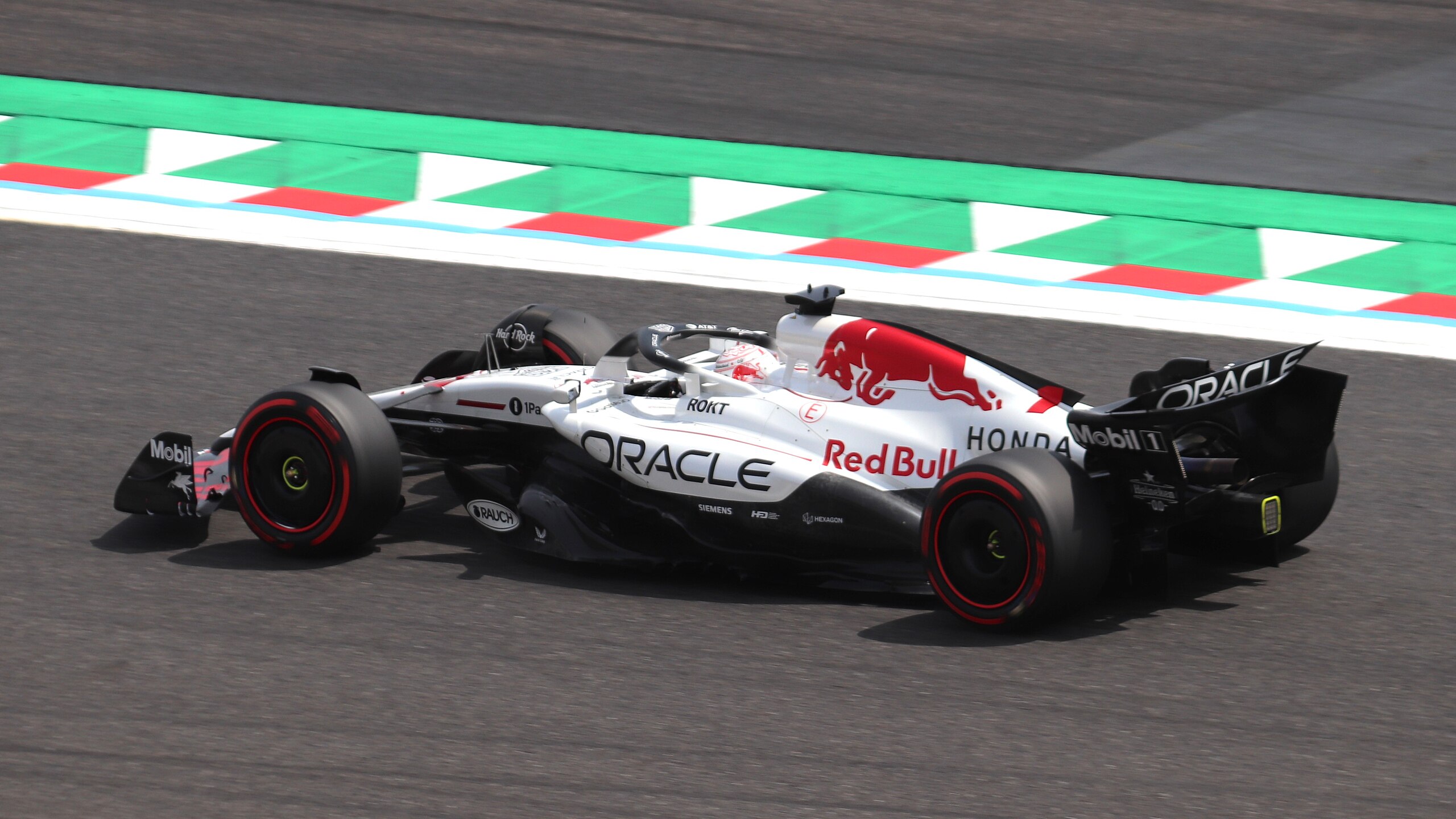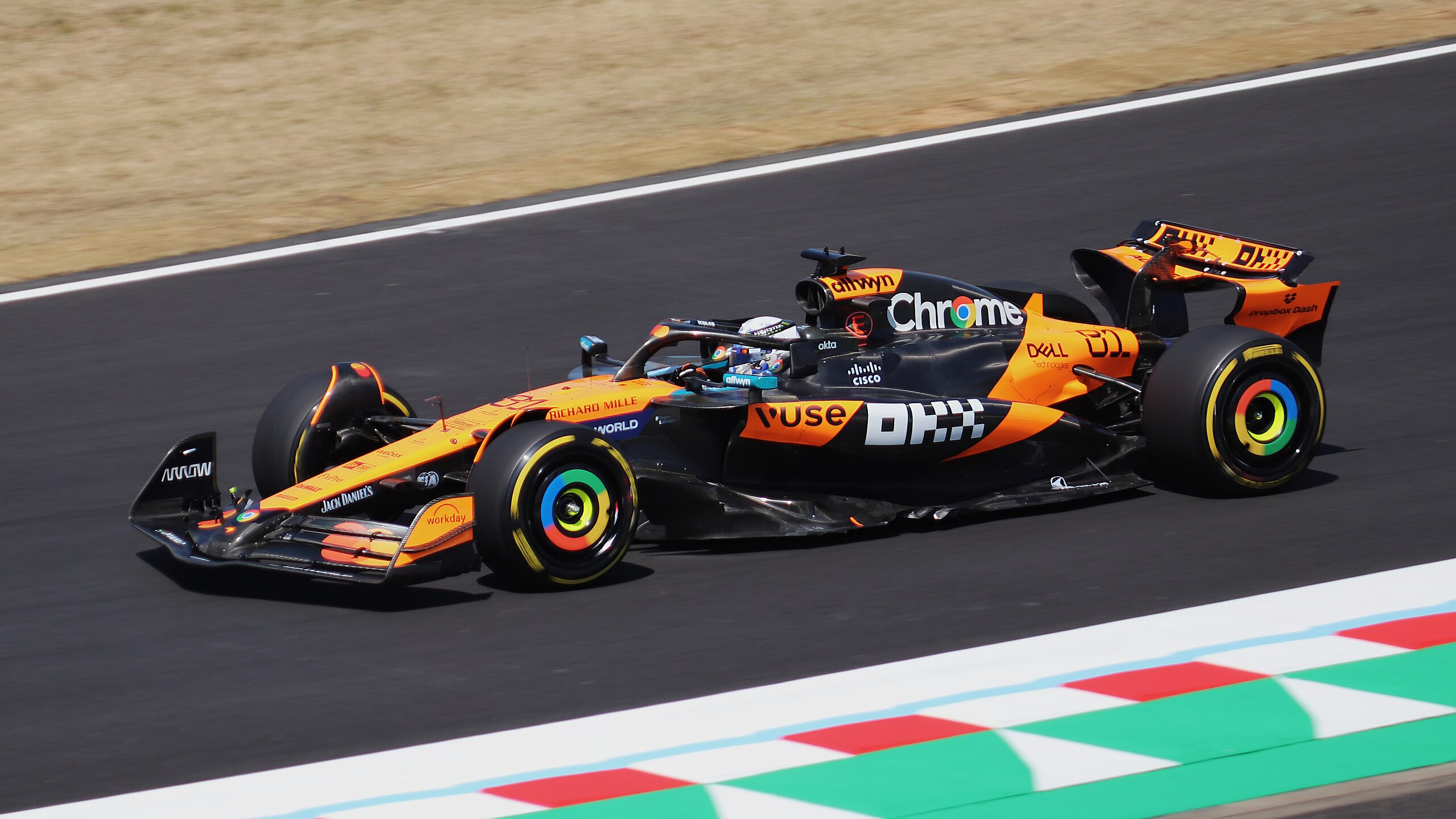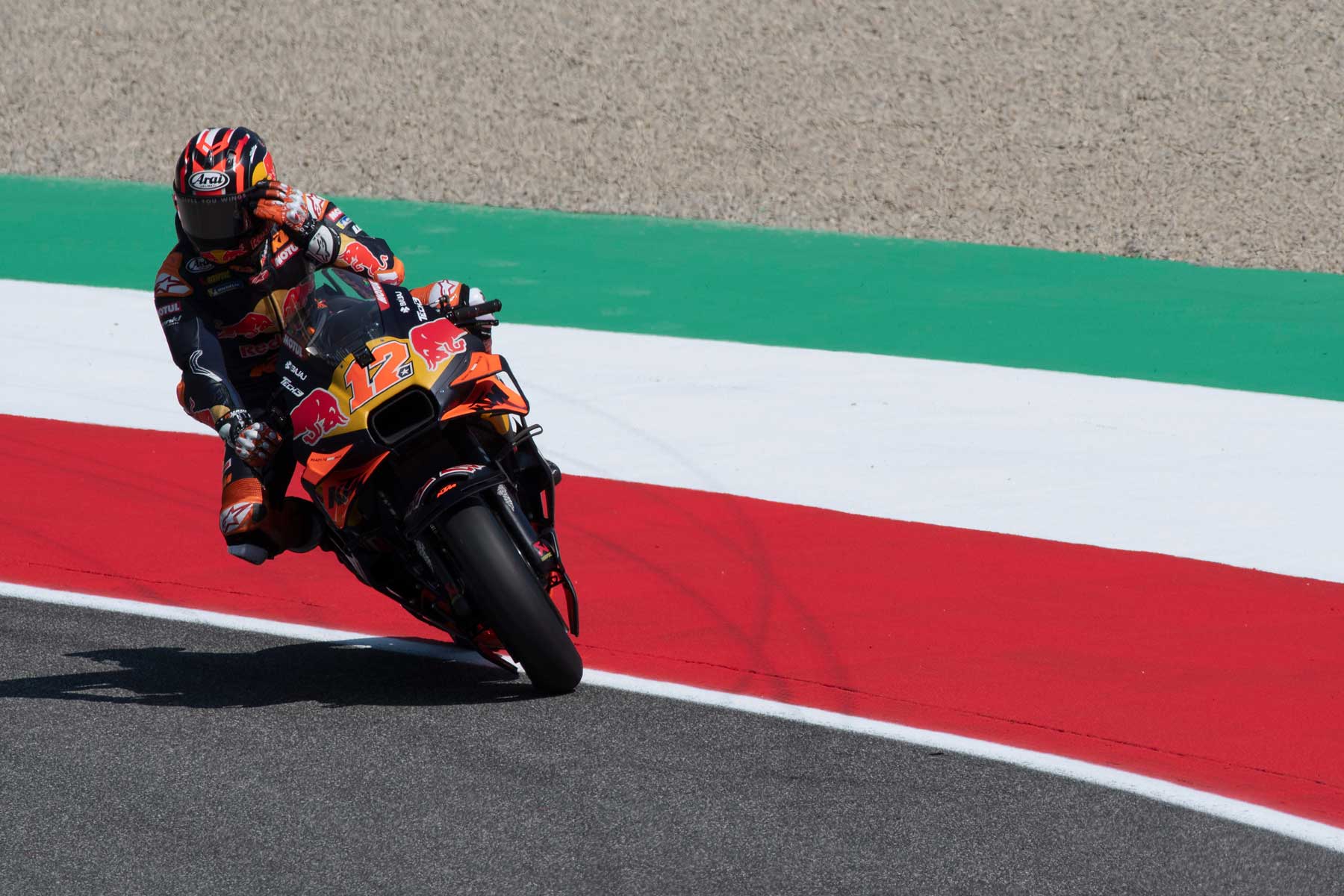Are you willing to sponsor?
Are you ready to explore the transformative power of athlete sponsorship for your brand? Click here to learn more about how sponsorship can help brands grow and thrive in the exciting world of motorsports.
By Silvia Schweiger| Posted March 9, 2022 | In Formula 1, Formula1
A couple of weeks left to the new F1 season, which will start with the Bahrain Grand Prix on March the 20th. Huge changes from the past for the new era of motorsport: all the teams seem focused on leaving nothing to chance, thanks to the substantial changes in the regulations.
The first important point, evident immediately both to the media and fans, concerns the aerodynamics. It is a car with simpler forms, fewer additional appendages, and less air disturbance than ever before. The decision to switch from a flat underbody to one made up of Venturi channels (wing-shaped at the rear) serves to amplify the so-called “ground effect”: greater height at the rear will lead to greater depression under the car, thus increasing the downforce generated by the underbody at high speeds.
The second reason for debate concerns the revolution of tyres and rims. There has been a change from the traditional 13-inch to the innovative 18-inch with an external cover, aimed at channelling as much air flow as possible and preventing the entire braking system from overheating. This has allowed the installation of larger discs and callipers, giving the driver the possibility to go into “braking” with better decision. However, there have been initial concerns from some of the drivers, who complain of reduced visibility due to the space taken up by the tyres.
Shall we expect other changes during the season? In addition, the challenge at Pirelli was based on researching and creating a compound capable of withstanding higher temperatures, allowing the tyre to have a longer life and consequently see more attacks during the race.
The weight of the car has also left room for various interpretations. Compared to 2021, there is an increase of almost 50 kg, thus repeating the situation experienced in 2014 with the addition of the hybrid to the naturally aspirated engine. The single seaters will have to have a minimum weight of 795 kg, excluding fuel. So, this is an addition of almost 100 kg in the last eight years alone.
Judging by the first opinions of the drivers in the simulators, the significant differences will be felt in the slow and tight sections. Will their driving style have to change drastically?
There is also news on the safety front. According to the regulations, the chassis will have to absorb 48% more impact at the front and 15% more at the rear, unlike in 2021. Looking at the trend in accidents over the years, fatal ones are occurring more and more rarely (the last being Jules Bianchi at Suzuka in 2014). The excellent results achieved show how an extreme sport does not lose its spectacular dna while respecting the drivers’ safety with innovative solutions (one of all, the introduction of the HALO in 2018).
In short, it promises to be the most competitive season ever. In particular, the greatest expectations lie with the team with the most entries ever: will this be the year of Ferrari’s rebirth?
Team Principal Mattia Binotto made some emblematic statements at the presentation of the F1-75: “The work that has been done is incredible. It’s a single seater in which we’ve put the best of ourselves. I’m proud, it has all our passion and know-how in it. It’s a Ferrari that I call courageous.”
Some rumours place the Italian team ahead of its Mercedes rivals. In fact, the body of the Rossa is said to guarantee 7% better aerodynamics than the German team. Numbers that only the track will be able to refute or not.
Toto Wolff‘s sugar-coated words for the Prancing Horse during the presentation of the new “Silver Arrow” W13: “Any team could have found a magic solution, as happened with the double diffuser on the Brawn GP in 2009. As a racing fan, I love Ferrari and I want it to be competitive. It’s the biggest name in Formula 1 and we’ve missed seeing it fight for victory in the last two or three years.
As with all self-respecting developments, fans also play their part. According to the latest research by The Insights Family (a market researcher, collaborating with Formula 1 from 2019) this is one of the fastest growing sports in recent years. The main objective was simple: what are the interests of viewers and how can young people be approached? In the age of digital entertainment, video game content is king.
From the material published by the league to that of the pilot, everything that creates engagement gets the new generations excited.
In this regard, it is impossible not to mention the media impact achieved by the Netflix-produced docu-series “Formula 1: Drive to survive”.
For the first time, the paddock is stripped bare to show the stark reality behind carbon bodies. It’s not just about points, scoreboards, and podiums.
It’s not just a sport: it’s living or losing.
The aim of the documentary is to bring the viewer into the heartfelt situations of a season in a way they could never have imagined before. Drivers no longer wear the guise of millionaire investments, but also that of human beings. As such, imagining the infinite variables they experience on and off the track is a rare emotion.
How to make this immersion even more meaningful?
Sim Racing is a reality that has taken off with the advancement of technology in the gaming field. The catchment area mainly comprises the 16-24 age group, with a preference for consoles. Although there is a predominantly male turnout in the practice, there is most of the female audience for the use of online content such as live streaming and events. Among the many interesting points, eSport promotes inclusiveness and breaks down any social barriers. These are all values that are reflected in the face of the organisation that is in charge.
The championship didn’t miss the opportunity and on 21 August 2017, the birth of the Formula 1 eSport Pro Series was announced. This is an event that has involved more than 60,000 players from all over the world and as many as 123 countries interested in watching. To make the appeal even stronger, there was no shortage of participation from the likes of Mercedes AMG Petronas Motorsport and Red Bull Racing.
Another excellently exploited opportunity concerns the Virtual Grand Prix: a tournament inaugurated in 2020, due to the lockdown, which has seen the participation of some professional drivers and some 30 million young viewers (even being broadcast on Sky Sport F1).
Any fan can get involved, regardless of their means.
Just as sport should be.
Are you ready to explore the transformative power of athlete sponsorship for your brand? Click here to learn more about how sponsorship can help brands grow and thrive in the exciting world of motorsports.

Associate Director, Executive Marketing and Commercial at RTR Sports Marketing, a London-based sports marketing company specializing in motorsport for over 25 years. Without sports, life is boring
The online platform where you can discover the latest trends, strategies and insights from the exciting world of sports marketing.
View our blog
July 4, 2025
When, in 1950, the Formula 1 kicked off at Silverstone, no one could have predicted that, 75 years later, it would become much more than a sport. Today, F1 is a global phenomenon, a cultural,[...]
Read More
July 1, 2025
In the complex and exciting world of Formula 1, performance no longer belongs exclusively to wind tunnels and race strategies. It also unfolds in boardrooms, brand labs, and experiential mark[...]
Read More
June 26, 2025
This content is password protected. To view it please enter your password below: Password: [...]
Read MoreIn an era where it is possible to get anywhere with a click, there is a strong temptation to approach teams and properties directly for sponsorship projects.
By doing so, we are convinced that we are shortening the value chain, saving time and money. However, these DYI methods are anything but risk-free and what initially appears to be a competitive advantage soon turns into a problem that is difficult to resolve. That’s why there are agencies. And this is why you should rely on us for your sponsorships.
When first approaching a sponsorship or sports marketing project, it is difficult to know immediately which stakeholders are correct, what the decision flow is, and what the right timelines are for each process. Sports is a very specialized field of action, and fitting effectively into its paths can take a lot of time and therefore money. We, on the other hand, know referents and spheres of action and know who to talk to, when and how. So you are also more effective.
Sports is an immense passion, and for our heart colors we would be willing to do anything. But business is a different business, and it is important to make the best possible strategic decisions based on independent research, statistics and reliable data. A sports marketing and sports sponsorship agency like RTR has an objective, 360-degree picture of the scenario and can tell you what is really best for you: which sport, which athlete, which team. This is because we possess a great deal of data and information on ratings, segmentation and attitudes. Because the numbers don’t lie. Never.
Activations are the real heart of sports sponsorship. Without them, there remains only a blank sticker on a motorcycle, car or uniform and no contact with the public, no emotional connection, no impact on the bottom line. Then how do you do it? It certainly won’t be the teams or the athletes who will help you leverage sponsorship and enjoy the many marketing rights you have paid for. To bring out the best in a sports marketing project you need an agency that knows how to use sponsorship to engage the fanbase on the Web, to reach out to Shopping Centers, to organize hospitality, to develop B2B and B2C opportunities, and to get “your” athletes in front of millions of potential consumers.
Would you ever go to the dealer who sold you the car and ask if the competitor’s car is better? No, of course. So, how do you expect to get firm measurements of the effectiveness of your sponsorship if you do not rely on someone super partes? At RTR, we have always worked with independent third-party agencies that allow us to know the return on any exposure of your brand on TV and in the media. In addition, we believe in calculating ROI as the ultimate measure of your success-so we can tell you for every penny you spend how much you are making.
We have been involved in sports sponsorship and sports marketing for more than 15 years. We are consultants in the sense that our goal is to maximize your investment, but we are also an agency that manages the project from start to finish. We have been doing this since 1995 with passion and professionalism, following three principles that have become cornerstones of our business: independence, verticality and transparency.
I would like to highlight the fact that one of the qualities of RTR is its great ability to approach the sponsorship scenario strategically, together with its passionate attitude, its amazing enthusiasm for solving problems, and its high level of professionalism.
Gianluca Degliesposti
Executive Director Server&Storage EMEA
Eurosport is truly delighted with its business relationship with Riccardo Tafà, who has become extremely popular, thanks to his detailed knowledge of the sports marketing sector and his highly diligent attitude to work.
Francois Ribeiro
Commercial Director
Passion and Expertise are the features that I have found in RTR since the very beginning. Serious and reliable professionals but also very helpful, nice and open-mind people, willing to listen and compare different ideas. All the values in which RTR believes make this agency a partner, not just a supplier, a partner with whom we have had the opportunity to achieve significant commercial results in term of success and image.
Luca Pacitto
Head of Communication
We have been working with RTR Sports Marketing for over 10 years. The objectives and the programmes of collaboration continue to be renewed and to grow with mutual satisfaction. I believe RTR is a team of great professionals led by Riccardo Tafà, who I consider a manager of exceptional skills and with a great passion for his work.
Lucio Cecchinello
Team Principal
I have known and worked with Riccardo Tafà since 1995 when we collaborated for the first time on a project for the Williams Formula 1 team. Several clients followed. After leaving Williams to work for Gerhard Berger then owner of the Toro Rosso F1 Team, I turned again to Riccardo to seek his help in finding a tool supplier for the team and Riccardo duly obliged with an introduction to USAG, a partnership with Toro Rosso which endured for five years. I recently started a new role as Group Commercial Director for the renowned Andretti Autosport organisation and I find myself working with Riccardo once again on a number of interesting projects. Why has this relationship with Riccardo endured ? He’s smart, knows the commercial side of sport inside out and back to front and he’s honest and trustworthy. Riccardo Tafà is a “doer” not a “talker”: in over 20 years I have never had a dispute either with him or with a company that he has introduced and each partnership introduced by Riccardo has delivered quantifiable ROI to rights holder and sponsor alike. I can think of no better testimonial of Riccardo’s diligence, knowledge, contact base and hard work than that.
Jim Wright
Group Commercial Director
The online platform where you can discover the latest trends, strategies and insights from the exciting world of sports marketing.
View our blog
July 4, 2025
When, in 1950, the Formula 1 kicked off at Silverstone, no one could have predicted that, 75 years later, it would become much more than a sport. Today, F1 is a global phenomenon, a cultural,[...]
Read More
July 1, 2025
In the complex and exciting world of Formula 1, performance no longer belongs exclusively to wind tunnels and race strategies. It also unfolds in boardrooms, brand labs, and experiential mark[...]
Read More
June 26, 2025
The European Commission has provided Liberty Media Corporation with unconditional approval to complete the acquisition of the MotoGP World Championship. The process of annexing the top motorc[...]
Read More